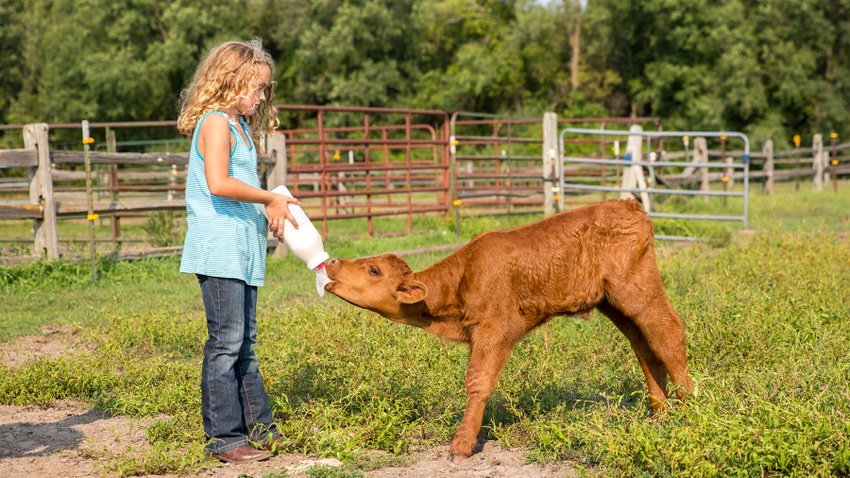February 2, 2023

by Carol Ihde
It would be safe to say the ideal beef cow has sound feet and legs, maintains an ideal body condition score without the need for additional concentrates, weans a nice-sized calf, is easy to handle — especially in times of stress, is bred back within 30 days of bull turnout, and repeats this process for many years.
However, her ability to provide a weaned calf of adequate size that will grow into a finished market animal or productive replacement heifer rests on her ability to make high-quality colostrum, known as colostrogenesis, and the ability of the calf to obtain it.
Nutrients, immunoglobins (Ig antibodies), hormones, growth factors, cytokines and oligosaccharides found in colostrum are absorbed by the calf through a process of passive immunity to create their ability to defend and neutralize pathogens. Without enough colostrum absorbed during the first six hours of life, calves are at a higher risk of morbidity and mortality at a young age.
Colostrum formation
Colostrum is formed during the last weeks (up to four weeks) of gestation and is stored in the mammary glands. Before parturition, colostrum formation ceases as the mammary gland prepares for lactation. The milk made just before parturition does not contain colostrum and begins to dilute the colostrum. Increased time between calf birth and nursing decreases the concentration of colostrum due to the creation of milk.
Feedstuffs and rations must meet the nutritional needs of the gestating female during mid- and late gestation for her to make high-quality colostrum. Along with proper nutrition and body condition, the beef producer should ensure females are current on vaccinations. Vaccinations for diseases such as calf scours need to be administered to cows and heifers up to 10 weeks before calving to ensure the adult animal responds and the antibodies and other immune system components pass into the udder during colostrogenesis. Creating a vaccination protocol with your veterinarian can ensure that beef females incorporate adequate immune factors into colostrum.
The cow or heifer has to create high-quality colostrum, and her calf must also be able to suckle within the first hours of life. This is where udder structure and mothering ability come into play. A cow with a long, pendulous udder and large or non-functional teats can hinder or prevent a calf from nursing.
Udder scoring cows and taking notes during the calving season and the months before weaning will facilitate culling problem cows before calving again. Udder characteristics are moderately heritable, and replacement females from mothers with poor udders should not be selected. Research is being done to study the effects of udder characteristics and feedlot performance.
Assistance needed
A calf that cannot obtain sufficient colostrum promptly due to being born during inclement weather, poor mothering, low birth weight, or low vigor because of prolonged or difficult labor will need assistance. Prepare for the calving season with supplies to warm and dry off the cold and wet calf, a biosecure source of replacement colostrum, and a clean bedded pen for the cow to bond with her calf.
Active formation of colostrum has been shown to begin up to four weeks before parturition. Therefore, ensure your beef females have proper nutrition, adequate body condition and vaccinations during all stages of gestation for colostrogenesis, and sound udders and teats for ease of nursing and calf growth. And provide a clean environment for cow-calf pair bonding to facilitate passive transfer of immunity.
Ihde is the Extension ag educator for Crawford and Richland counties. This column is provided by the University of Wisconsin Division of Extension Livestock Team.
You May Also Like




